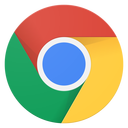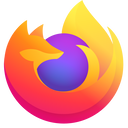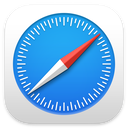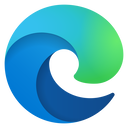DCT1234 STRUCTURED PROGRAMMING - SEM 3 (2021/2022)
Class
Have you ever thought about the software or program or application that has simplified the whole procedure? Have you ever thought of life without this kind of program? By the way, in computer studies, the term program and application means more or less the same thing. Computer programs have certainly made life easier for us. Have you ever thought about how software or program or application is created? Would you like to be able to create your own computer program? How are you going to do this? The answer is to learn programming languages. This is what this subject is all about.
Here is the class outline:
1. INTRODUCTION TO STRUCTURED PROGRAMMING (DCT1234)3 sections
|
|||
|
2. CHAPTER 1 - INTRODUCTION TO PROGRAMMING
Feb 14
Learning Outcomes: 1. Explain the concept of programming language and the three flow control structure 2. Explain the seven steps of programming 3. Prepare an algorithm and flowchart for a given problem using the standard symbols. 4.State the three generations of programming languages and the know the brief history of programming languages 4 sections
|
||||
|
3. CHAPTER 2 - PROGRAMMING TOOLS FOR C++
Feb 14
Learning Outcomes: 1. To code the first program using the selected programming tool. 1 section
|
|
|
4. CHAPTER 3 - GETTING STARTED WITH C++
Feb 14
Learning Outcomes: 1. Explain the basic components of a computer program. 2. Use the output and input statements in a simple program. 3. Prepare a computer program using the appropriate escape sequence in order to obtain the proper output. 4. Identify the reserved words in a programming language. 3 sections
|
|||
|
5. CHAPTER 4 -VARIABLES AND OPERATORS
Feb 14
Learning Outcomes: 1. Use the variables in a program. 2. Solve a mathematical problem using mathematical operators. 3. Manipulate the increment and decrement operators in a program. 4. Identify the errors in a program and determine the output for a given program. ▪ Compose a sequential control structure program using variables and operators 4 sections
|
||||
|
6. CHAPTER 5: SELECTION STRUCTURE
May 19
Learning Outcomes: 1. Compose a selection control structure program using if, if else and switch statements 2. Compose a selection program based on the given conditions 3. Identify the errors in a selection program and determine the output for a given program 8 sections
|
||||||||
|
7. CHAPTER 6 - REPETITION STRUCTURE
Jun 1
By end of this chapter, students shall be able to: 1. Identify the errors in a repetition program and determine the output for a given program 2. Compose a repetition control structure program using while, do while and for statements 6 sections
|
||||||
|
8. CHAPTER 7 - FUNCTION
Jun 16
Learning Outcomes: 1. Identify the errors in a function and determine the output for a given function. 2. Write a program using both standard library functions and user-defined functions. 3 sections
|
|||
|
9. CHAPTER 8 - ARRAYLearning Outcomes: 1. Identify the errors and determine the output for a given program with single-dimensional array. 2. Store and retrieve data in single-dimensional array. 3. Perform simple arithmetic operations using array 2 sections
|
||
|
10. CHAPTER 9 - STRUCTURELearning Outcomes: By end of this chapter, students shall be able to: 1.Identify the errors and determine the output for a given structure program. 2. Store and retrieve data from structure in a program. 3. Write a simple program using struct 4 sections
|
||||
|




(2).png?lmsauth=3cb7682b0a533780c6abc87b2b5791a2cd7a7ace)
(3).png?lmsauth=53f59a3eff4c42f64959607fcaecdc3482d82cbd)